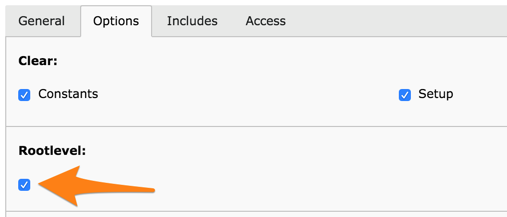Attention
TYPO3 v10 has reached end-of-life as of April 30th 2023 and is no longer being maintained. Use the version switcher on the top left of this page to select documentation for a supported version of TYPO3.
Need more time before upgrading? You can purchase Extended Long Term Support (ELTS) for TYPO3 v10 here: TYPO3 ELTS.
The main template¶
The TypoScript code used to define how pages are rendered is located in the "main" template. In this template a so-called "rootlevel flag" is set.

When the frontend renders a page, TYPO3 CMS searches along the page tree up to the root page to find a "main" template. Normally, there are additional templates besides the "main" template. For now, we will assume we are only using the "main" template.
TypoScript syntax is very straightforward. On the left side, objects and properties are defined. On the right side are the assigned values. Both objects and properties can contain other objects. Object properties are defined by using the dot "." notation.
The following is a typical example of TypoScript syntax:
page = PAGE
page.10 = TEXT
page.10.value = Hello World
